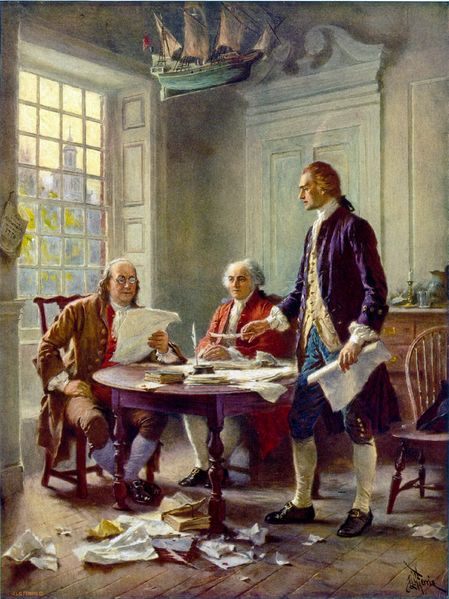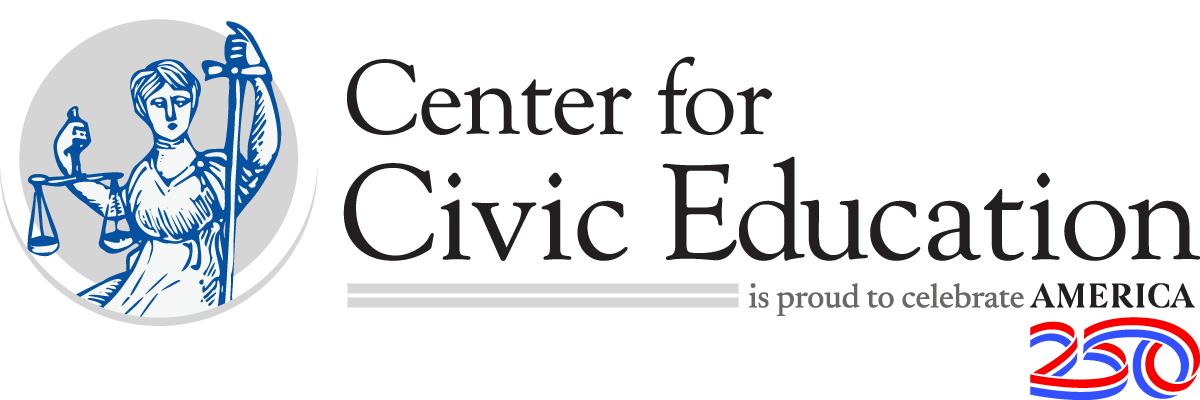What Fundamental Ideas about Government Do Americans Share?
Introduction
"Educate and inform the whole mass of the people...they are the only sure reliance for the preservation of our liberty."
—Thomas Jefferson
"No free government, or the blessings of liberty, can be preserved to any people but...by frequent recurrence to fundamental principles."
—George Mason
Independence Day, commonly referred to as the Fourth of July, is a time to remember and appreciate our heritage of a democratic form of government and to reflect on our country's fundamental principles. The following lesson for high school students and youth groups is designed to respond to Jefferson's call to "educate...the whole mass of the people" and Mason's call to refer to fundamental principles. It concludes with an opportunity to add one's signature to those of the Founders of this nation who signed the original documents.
We hope you have a pleasant Fourth of July and find this lesson plan useful with your students.
Sincerely,
The staff of the Center for Civic Education
In this lesson, you will examine some of the fundamental ideas about government that are contained in the Declaration of Independence and the Preamble to the U.S. Constitution. When you have completed this lesson, you should be able to explain those ideas and identify which ideas the class holds in common. If you support these ideas, you will be given an opportunity to go online and add your signature to those of the Founders of our nation who signed the original documents.
![]()
 What fundamental ideas about government are contained in our founding documents?
What fundamental ideas about government are contained in our founding documents?
The second paragraph of the Declaration of Independence and the Preamble to the Constitution contain some of the most fundamental ideas underlying our American constitutional democracy. The following exercises provide you with an opportunity to examine these ideas. They also provide an opportunity to add your name to an online list of the original cosigners of the documents.
PART 1
Excerpt from the Declaration of Independence
Working with two or three other students, read and discuss the following excerpts from the Declaration of Independence. As a group, put the ideas in these excerpts into your own words and use what you have written in the Class Activity that follows.
You will find that most of the ideas are clear and easily understood. However, others are not so clear and you might need to research what scholars think the Founders meant when they wrote them. For example, what did they mean when they wrote that they held “these Truths to be self-evident”, “all Men are created equal”, “unalienable rights”, and the “Pursuit of Happiness”? Some information on these phrases is included in the Terms to Know section of this website. You might also want to research information—in a library or online—about the meaning of these words or alternative interpretations of their meaning.
“We hold these truths to be self-evident, that all Men are created equal…”
“…That they are endowed by their Creator with certain unalienable Rights, that among these are Life, Liberty, and the Pursuit of Happiness;”
“That to secure these Rights, Governments are instituted among Men…”
“…deriving their just Powers from the Consent of the Governed…”
“…that whenever any Form of Government becomes destructive of these Ends it is the Right of the People to alter or to abolish it, and to institute new Government, laying its Foundation on such Principles, and organizing its Power in such Form, as to them shall seem most likely to effect their Safety and Happiness.”
Class activity
Each group should take turns sharing ideas they have identified and writing them on chart paper or a white board. As each idea is listed, place the words “agree” and “disagree” next to it and leave space for a tally. See the example below.
_______Agree ______Disagree
After listing all of the ideas the groups have identified, the class should show by a vote of hands which of the ideas they agree or disagree with and tally the results in the spaces provided.
Finally, a class discussion should focus upon the following questions.
- Which ideas, if any, do you all agree upon?
- On which ideas, if any, are there disagreements? What are the reasons for the disagreements?
After discussing the reasons for disagreements, students may change their votes
and the resulting tally.
- Do the ideas on which you all agree have anything to do with what it means to be an American?
Why or why not?
PART 2
Preamble to the U.S. Constitution
Like the Declaration of Independence, the U.S. Constitution contains some of the most fundamental ideas upon which our constitutional democracy is based. The Preamble to the U.S. Constitution sets forth six general purposes of the Constitution and responsibilities of the government it creates.
Just as in the Declaration, you will find that some of the ideas are clear and easily understood. However, others are not so clear and you might need to research what scholars think the Founders meant when they wrote them. For example, what did they mean when they used the terms justice, domestic Tranquility, and the general Welfare? You can find information on these words and phrases in the Terms to Know section of this website. You might also want to research information—in a library or online—about the meaning of these words and alternative interpretations of their meaning.
Work with two or three other students. Read and discuss the different purposes of government in the Preamble as they are listed below. Then work together to put each purpose in your own words in preparation for the class activity that follows. For each purpose, complete the following sentence: “The Preamble to the U.S. Constitution says the People have established the government in order to ____________.” Fill in the blank for each purpose listed in the Preamble as they are set forth below.
“We the People of the United States, in order to
• establish Justice,
• insure domestic Tranquility,
• provide for the common defence,
• promote the general Welfare, and
• secure the Blessings of Liberty to ourselves and our Posterity,
do ordain and establish this Constitution for the United States of America.”
Class activity
Each group should take turns sharing its wording of the purposes. The class should work together to agree upon the best statements of the purposes of government. Each of the six statements agreed upon should be entered on chart paper or a white board. As each purpose is listed, place the words Agree and Disagree next to it and leave space for a tally. See the example below.
_______Agree ______Disagree
After listing all of the purposes the groups have identified, the class should show by a vote of hands which purposes they agree or disagree with and tally the results in the spaces provided.
Finally, a class discussion should focus upon the following questions.
- Which purposes, if any, do you all agree upon?
- On which purposes, if any, are there disagreements? What are the reasons for the disagreements? After discussing the reasons for disagreements, students may change their votes and the resulting tally.
- Are any disagreements you might have about the purposes in general or how they should be interpreted and applied? How do you think such disagreements should be managed? What do your agreements and disagreements say about what it means to be an American?
- What other purposes, if any, do you think should be added? Why should they be added?





